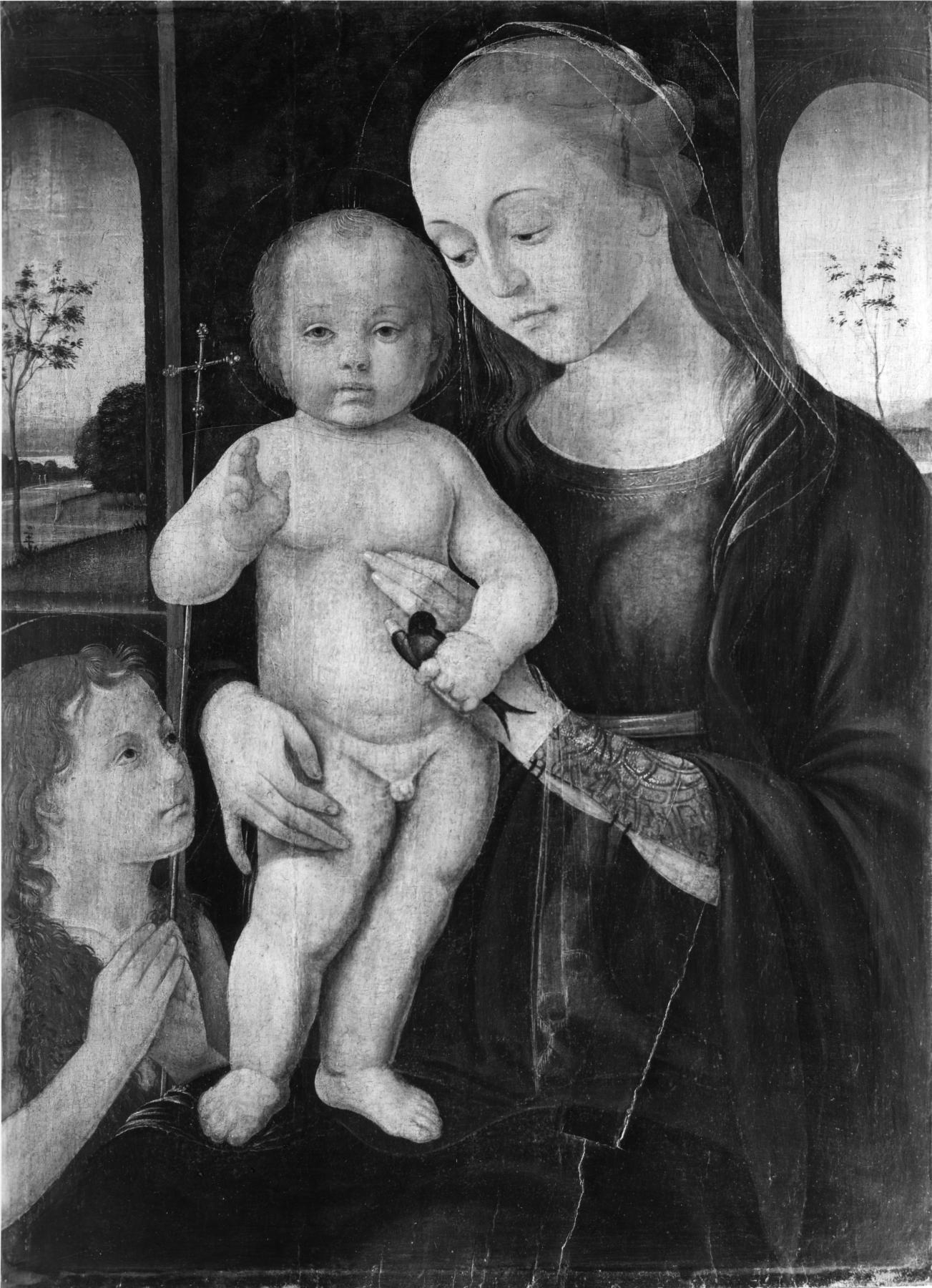Madonna and Child with the Young St. John the Baptist
(Renaissance Europe )
Half-length images of the Madonna and Child enjoyed great popularity in the domestic interiors of Renaissance Italy. This example makes especially clear that, in addition to their decorative function, these images could serve as the focus for daily prayer. The Christ Child stands upright on his mother’s knee and gazes directly at the viewer, to whom he offers a gesture of blessing. In the lower left, the young John the Baptist—Christ’s cousin and the patron saint of Florence—looks on in prayer, mirroring the actions of those who would have originally prayed before the painting. In his left hand the Christ Child holds a swallow, a popular symbol of his Resurrection based the old belief that the bird hibernated during the winter and reappeared in the spring, when the Resurrection was celebrated.
The painting is a typical work of the Florentine painter Biagio d’Antonio, best remembered today as among the group of artists summoned to Rome in the 1480s to work in the Sistine Chapel in the Papal Apartments.
Provenance
Provenance (from the French provenir, 'to come from/forth') is the chronology of the ownership, custody, or location of a historical object. Learn more about provenance at the Walters.
Don Marcello Massarenti Collection, Rome [date and mode of acquisition unknown] [1897 catalogue: no. 405, as Niccolò Rondinelli]; Henry Walters, Baltimore, 1902, by purchase; Walters Art Museum, 1931, by bequest.
Conservation
| Date | Description | Narrative |
|---|---|---|
| Examination | examined for condition; x-ray | |
| 7/9/1965 | Treatment | x-ray |
Geographies
Italy, Florence (Place of Origin)
Measurements
Painted surface H: 25 1/4 x W: 18 1/4 x D excluding cradle: 3/8 in. (64.2 x 46.3 x 1 cm)
Credit Line
Acquired by Henry Walters with the Massarenti Collection, 1902
Location in Museum
Not on view
Accession Number
In libraries, galleries, museums, and archives, an accession number is a unique identifier assigned to each object in the collection.
In libraries, galleries, museums, and archives, an accession number is a unique identifier assigned to each object in the collection.
37.471


